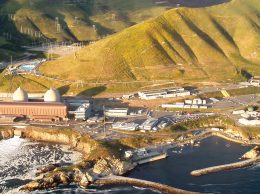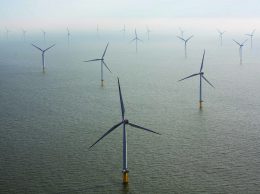Just a little over a year ago, the Diablo Canyon nuclear plant near San Luis Obispo was on track to earn a 20-year extension of its operating license.
But the earthquake-tsunami-nuclear disaster last March at the Fukushima Daiichi power station in northern Japan changed the future trajectory of the nuclear industry around the world.
PG&E, owner of Diablo Canyon, has put the relicensing on hold. There is no timetable for restarting the process for the Nuclear Regulatory Commission to extend the plant’s operating license to 2045 from 2025. An NRC inspection last spring turned up more than a dozen problems with Diablo’s emergency procedures, including missing extension cords, fans that wouldn’t start and problems running a hose from an emergency water reservoir to the plant.
While many of these problems were easily addressed, we continue to believe that the Central Coast should not be shortchanged when it comes to safety and risk management at Diablo Canyon.
PG&E just agreed to paid $70 million in restitution to the city of San Bruno in the wake of a natural gas pipeline explosion in 2010 that killed six people, destroyed homes and caused significant damage to the city’s infrastructure.
In our view, PG&E has not done enough to make sure that the wonderful communities, world-class vineyards and valuable agricultural lands within 50 miles of Diablo Canyon would not suffer damage in an unlikely but plausible combination of events that would accompany an earthquake, tsunami and power blackout. Complicating things is the fact that thousands of people who live within the 50-mile evacuation radius are not customers of PG&E, because they live outside its service area.
Edwin Lyman, a nuclear expert who contributed to a recent report on the future of nuclear power for The Economist, thinks PG&E and other plant operators have not done enough to put equipment into place that could survive an event that lies beyond the “design basis” of the plant. He also thinks that PG&E has not been imaginative enough in planning for scenarios where both reactors at the plant would be simultaneously knocked out. For agriculture the stakes are extremely high because as Lyman said, “a little radiation goes a long way” in damaging a region’s reputation as well as its food supply.
The lesson of Fukushima Daiichi should not be that nuclear power is too risky to be part of our energy mix. Diablo Canyon has a solid operating history and efficiently provides a big chunk of base load power for the entire PG&E system.
This pause in relicensing should be a chance for PG&E to make real improvements in safety systems, to re-examine related issues such as how it stores spent fuel rods at the plant, and to shore up its ability to manage a low-probability-but-high-risk event.






 Print
Print Email
Email


















Current operating nuclear power plant technology dates back more than 40 years. The NRC claims that new technology is ten times safer. The industry is to be lauded in their attempts to correct the shortcomings they have encountered and continue to work to improve their safety. But past history has told us that they can never be safe enough. Certain designs cannot overcome certain aspects that make these plants less safe.
The past Japanese prime minister recently said “safe nuclear power is a myth.” When you consider the potential ramifications of the risk we take is pursuing “clean nuclear energy” you cannot justify continuing to make further investments in plant improvement.
One major event has the potential of destroying the lives of millions of people and seriously impacting not only the economy of a state but of the nation.
It is far more sensible to invest in renewable energies like wind, solar, geothermal, and currents and tides. Some of these do not consistently produce energy but storage technologies are now evolving which help to level production or meet peaks in load demand. All of these sources pose infinitely less risk.
We have an interim source of cheap power available with natural gas. It is far less polluting than other fossil fuels and is still declining in cost as the reserve exceeds 100 years. Building a new gas powered plant cost 1/4 that of a nuclear plant and can be built in half the time. It has no dangerous radioactive waste disposal problem which has plagued the nuclear industry for 50 years and still has no answer in sight. It presents no de-commissioning problems.
Meanwhile the cost of solar and wind continue to decline. We should now realize the when you take into account the initial cost of; the construction of a nuclear plant; operations and maintenance; spare parts and labor; dealing with waste fuel storage; decommissioning and security, the myth of nuclear power being a low cost energy is a myth.
Our government has invested over a half a trillion dollars in nuclear energy and we still cannot say it is sufficiently safe to assure that a catastrophic nuclear event won’t happen. Nature is unpredictable and earthquakes, tsunamis and tornados do occur. Humans are fallible and design fabrication, maintenance and operating errors occur. Parts wear and fail. Terrorism is a reality and we have enemies who recognize that a nuclear power plant is a cost effective target.
It is time to start weaning ourselves from the 64 nuclear plants around the country and to begin diverting the money being spent to sustain these plants toward far safer technologies. Three Mile Island, Chernobyl and Fukushims Daiichi should have been a wakeup call. Let’s not ignore it.